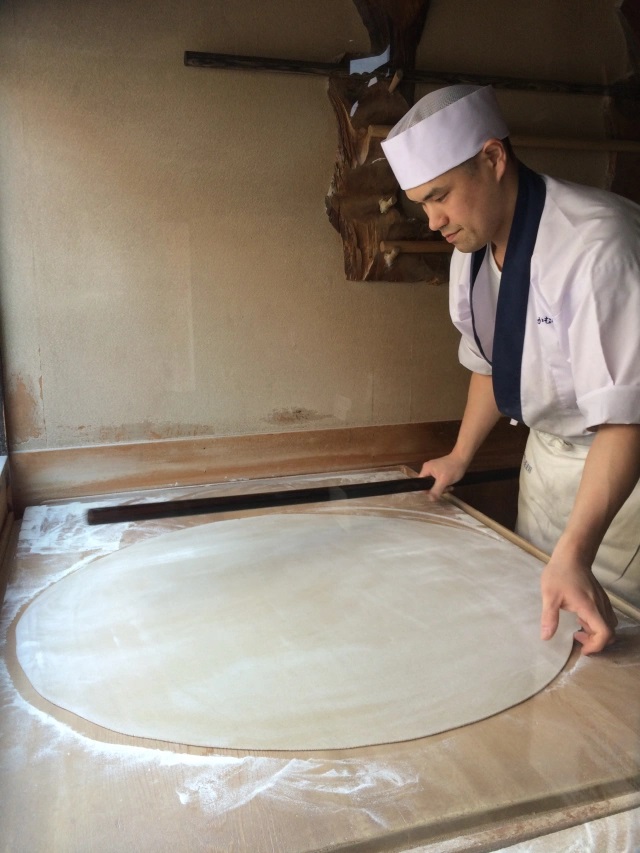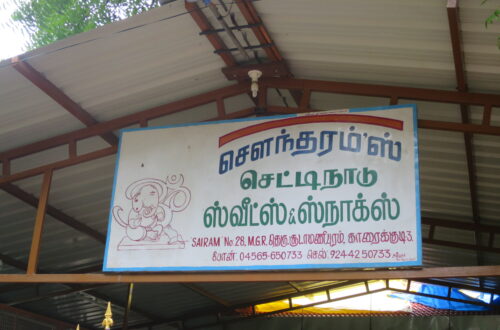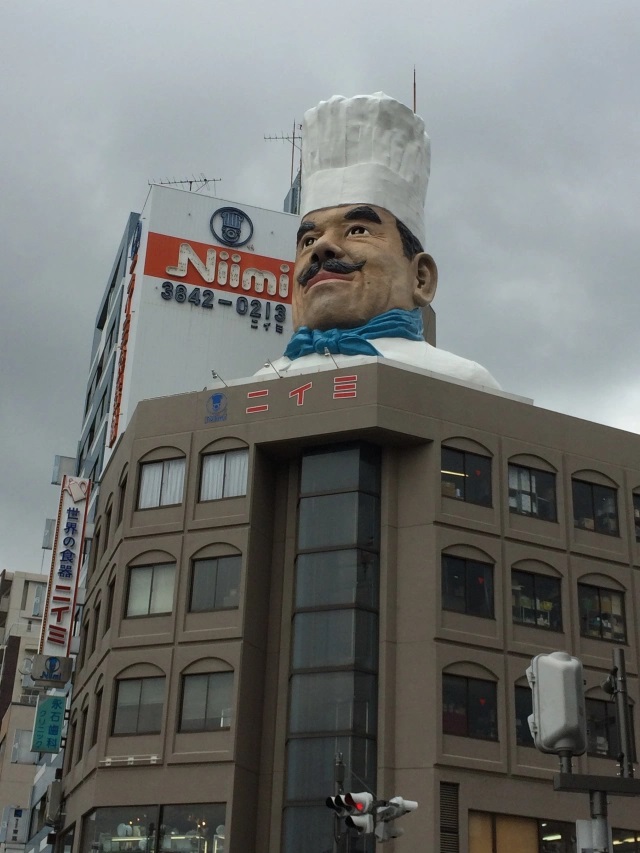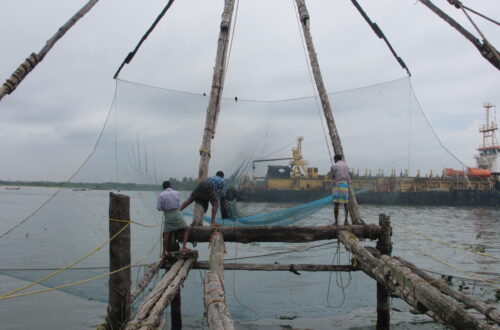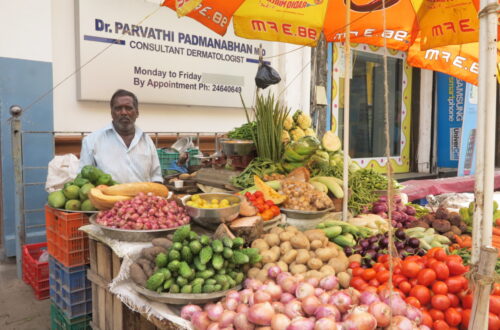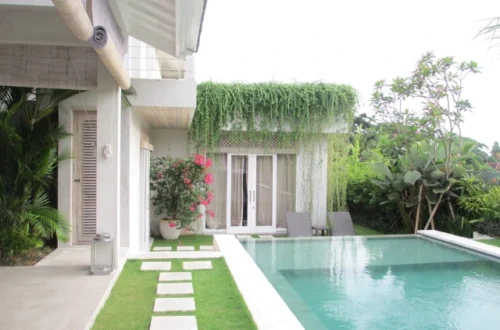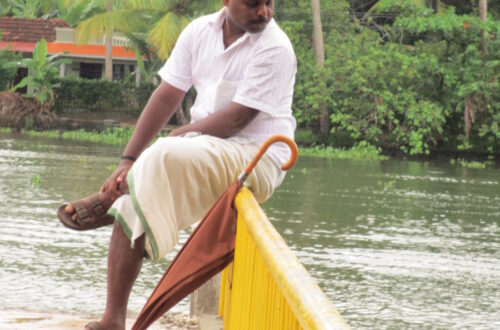-
Hand Crafted Soba
Soba (buckwheat based) is the preferred noodle in the Kanto region in Japan, whereas, in the Osaka region, udon (wheat based) noodle is eaten widely. I had the freshest hand-made soba ever in my life in a restaurant in Kamakura. I watched the chef making it from scratch and ate it hot in a soy based broth. I was told that to enjoy a bowl of soba, you should not chew the soba noodles too much and you should feel comfortable to make noise when slurping the noodles.
-
Kappabashi Street – Kitchenware Town
A visit to Kappabashi Street, the heart of Kitchenware Town is a must for all those in the food and hotel industry. This is the street to find bargains on kitchen utensils, Japanese porcelains, lacquerware, bento boxes, trays, baskets and knives! There are so many knife shops in this street and the craftsmen making the knives are usually there to explain the knives. They will even engrave your names in Katakana (Japanese alphabets for foreign words) while you wait. In this street and the neighbouring side streets you will also find shops taking orders to make plastic dummy pieces of your original food. You need to give them photographs of…
-
Tsukiji Fish Market
The Tsukiji Fish Market is a must visit place when in Tokyo. To watch the Tuna Auction at the market, I had to leave the hotel at 2 am. There are no trains at night and, therefore, if you plan to visit this market, stay at a nearby hotel within walkable distance. No one is allowed into the fish market wearing flip flops or high heels as this could be dangerous since the floor in the auction hall is wet and slippery. At the market place, be prepared to dodge the numerous cars, motorized three wheelers, forklifts, vans, wooden hand carts, trucks and trolleys – all on the move. Though…
-
Buddha Bellies Cooking School
It is certainly love at first sight with a fellow foodie when I met Ayuko who runs Buddha Bellies Cooking School in Tokyo!! The table was laid with some of the ingredients needed to make Edomae Sushi. Edomae sushi essentially means Tokyo-style sushi. In the 18th century, Tokyo was known as Edo and sushi was food specially invented for travellers who wanted bite size food on the go. Therefore, ingredients like vinegar, soy sauce, kelp and other ingredients were added to the rice to prevent spoilage or to make the rice lasts longer. Ayuko explained the brief history of sushi and types of sushi. Occasionally, she would take a book…
-
Tsukiji’s Outer Market
If the Tsukiji fish market is too intimidating for you, take a walk in the narrow streets just outside the market. You will find a wealth of seafood, fresh vegetables including the wasabi roots, dried seafood like bonito flakes and dried squids and many varieties of dried seaweed or kelp. There are also shops selling handcrafted sashimi knives and Japanese porcelain ware. The best quality sashimi restaurants are also located in this outer market.
-
The Killing Fields
I visited the Killing Fields in Choeung Ek where more than 20,000 people were buried. This is a sad place to visit but very informative. It was just awful to think that I was standing on top of a mass grave where underneath lay thousands of bodies. There was a shrine that housed the skulls of the massacred people!! It is shocking that such things happened in Cambodia not long ago!
-
People watching in Pune
It is only in the countryside that you get to see more people in ethnic clothes! When travelling, I want to see people the way they are - the villagers are innocent and mostly shy people but their hospitality is so warm. They are always ready to share their food - language is not a barrier here - just with gestures they will convince you to have a drink or eat something in their houses. I love people and I do not class people into groups. In my eyes, all men are equal!
-
Shivaji Market
When in Pune, visit the Sivaji market. You might consider being a vegetarian for life after seeing all that healthy, fresh looking vegetables on sale there. Most of them were probably just plucked from the trees that morning. The vendors were very friendly and the whole lot of them were like one huge family!! Check out the two women who are chiselling the mortar and pestles.
-
Ho Chi Minh street foods
There is lots more food in Vietnam than just Pho and Banh Mi. Vietnamese cuisine is all about fresh and simple ingredients. In Ho Chi Minh, everywhere you turn, whatever time it is, there are people preparing food or eating. People sit on low stools to consume their meals. When travelling always stick to freshly cooked hot food.
-
Binh Tay market in Cholon
I visited the big Ben Thanh market and did not like it for two reasons – the vendors were too pushy and there were too many touts. My favourite market in this city is certainly the Binh Tay market in Cholon. This market caters for the Vietnamese locals and therefore prices were very reasonable and I also found the vendors friendly.


